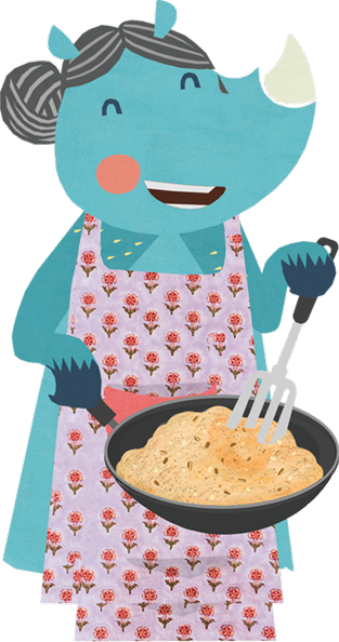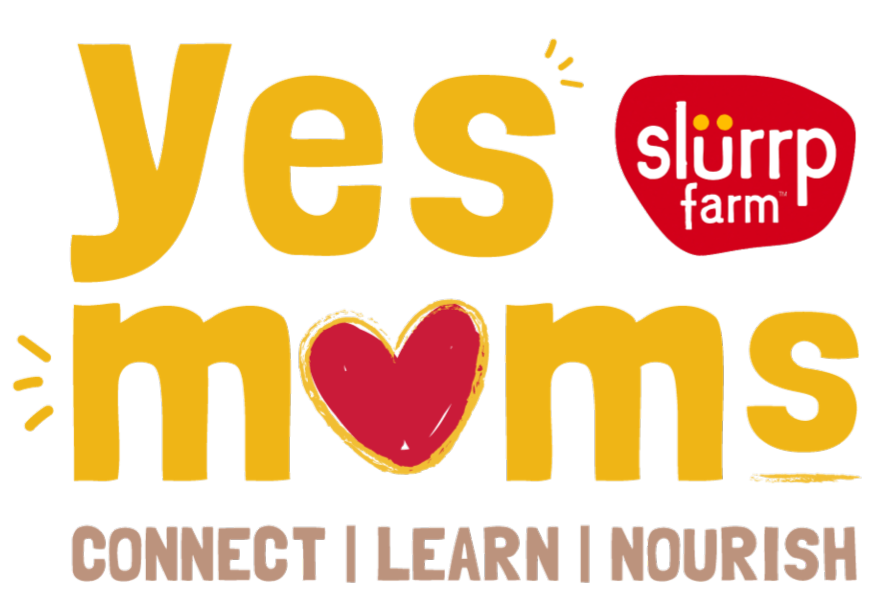As parents, introducing your little one to new foods is an exciting adventure, and cheese is often on the list of delicious possibilities. However, not all cheese is suitable for babies under 12 months.
Let's explore the world of cheese and discover the safe practices for incorporating it into your baby's diet.
Why Is Cheese Good for Babies`
Cheese is a nutritious food for babies when consumed in moderation. It offers a range of essential nutrients that are beneficial for their growth and development:
- Healthy fats: Cheese is a source of healthy fats, crucial for brain development and providing a dense source of energy.
- Protein: Rich in protein, cheese supports muscle development and overall growth.
- Vitamins: Cheese contains various vitamins, contributing to a healthy nervous system, strong blood cells, immunity, and good eyesight.
- Calcium and Vitamin D: Essential for strong bones and teeth, immune health, and muscle function.
- Selenium and zinc: Certain cheeses have selenium and zinc, which are helpful for your baby’s immune function and healthy hormonal regulation.
The Connection Between Cheese, Salt, and Babies
Salt is commonly used in making cheese for preservation, flavor enhancement, and moisture control. However, not all cheeses are equal when it comes to sodium content. The amount of sodium added to cheese depends entirely on the cheese maker, the brand, and several other factors. That’s why we recommend always reading the nutritional labels when buying cheese and checking the sodium levels mentioned. Cheeses that are high in sodium typically contain more than 100 mg of sodium per serving, which is roughly less than 360 mg per 100 grams.
The recommended sodium intake for babies below 1 year is less than 400 mg per day. A lot of cheeses (especially processed cheese) contain high levels of sodium. For example, one processed cheese cube can contain around 300 mg of sodium. We know that excessive sodium can be harmful to a baby's developing kidneys and is best avoided for children under 1 year.
The list of low-sodium cheeses is given later in this article.
The Various Types of Cheese
Let’s understand the difference between unprocessed and processed cheese.
Unprocessed or fresh cheese will typically have less sodium content and hence a shorter shelf life (because of the presence of fewer preservatives). An easy example is paneer (cottage cheese) or chhena.
Processed cheeses often contain very high sodium (often more than three times the sodium content of fresh cheese) and may include preservatives and artificial ingredients that aren't suitable for young babies.
The cheeses we get in India easily (and which are advertised heavily) are the “processed” kind. Examples: cheese slices, cheese cubes, cheese spread, pizza cheese, etc. (There’s a detailed look at the cheese types below.)
How can you identify whether a cheese is processed or not? Always look out for the words “Processed Cheese” on the pack. While the type of cheese may be “Cheddar” or “Parmesan,” the pack will also clearly mention “processed” if it’s processed. Also, remember, unprocessed or fresh cheese will be more expensive and less easily available.
The below table helps you understand the commonly found varieties of cheese as per their sodium content.
|
Cheese & Their Sodium Content |
||
|
Low sodium (can give this to babies) |
High sodium (best to avoid for babies under 1 year or restrict portions) |
Very high sodium (best to avoid) |
|
Paneer (cottage cheese) Ricotta Mascarpone Chenna Fresh Mozzarella |
Parmesan Mozzarella Gouda Cheddar Feta Cheese spreads |
Cheese slices Cheese cubes Cheese spreads Processed Cheddar Processed Mozzarella |
Wondering why Mozzarella and Cheddar appear in more than one column? This is because cheeses like Mozzarella and Cheddar can go through different levels of processing – hence they are available in the fresh/least processed form (which has low sodium) or in the moderately/highly processed form (with higher sodium).
Varieties of Indian Cheese
Did you know that there are local family-run farms and companies in India that are creating and selling artisanal cheese? Here’s a look at some unique cheese varieties that have their roots in India, but remember these cheeses are not suitable for babies under 1 year.
Bandel Cheese: This Asian cheese has its roots in a Portuguese colony called Bandel in eastern India. Today it’s produced in some towns near Kolkata.
Kalimpong Cheese: Originating from Kalimpong in West Bengal, this cheese is slightly acidic and has a crumbly texture when unripe.
Kalari Cheese: Kalari is a dense, solidified cheese typically crafted from cow's or buffalo's milk. Traditionally, it’s produced from raw, uncooked full-fat milk.
[The above is not an exhaustive list of Indian cheeses, just a glimpse into the local/regional cheeses available in India besides the usual brands of processed cheese we see in supermarkets.]
So, Which Cheese is Safe for Babies?
We recommend choosing “low sodium” cheese for your little one. These include:
- Paneer or chenna
- Ricotta
- Mascarpone
- Fresh mozzarella
|
WE SUGGEST: Keep in mind the RULE OF 3 when choosing cheese for babies under 1 year: (1) it has low sodium; (2) it’s made from pasteurized milk (not raw milk); (3) It’s not mold ripened. |
How to Introduce Cheese to Babies’ Meals
1) When can they start eating cheese?
Babies can start enjoying low sodium cheeses from 6 months onwards, or when they begin their solid food journey.
2) How much cheese can babies consume?

For babies under 12 months, it's recommended to limit cheese intake to 30-60 grams per day. Too much cheese can:
- Fill them up and not leave space for other essential nutrient-rich food.
- May cause digestive issues like constipation.
- May increase their sodium intake, which is harmful to their tiny bodies.
- May inhibit iron absorption, because cheese is a dairy product, and dairy products should be given in moderation to babies below 1 year.
3) What if a baby is on a vegan diet?
Vegan cheeses are an option, but we strongly recommend you look at the ingredients. Choose non-dairy cheeses with low sodium, minimal additives, and preservatives.
Although be mindful that the nutritional content in vegan cheese depends on its base (whether nut-based or soy-based), so it may not offer the same nutrient profile as regular dairy cheese.
Some Things to Remember Before Serving Cheese
1) Cheese can be a choking risk: Cheese can pose a choking hazard. Because if cheese forms a large glob, it can get stuck in their throat. So offer thinly sliced cheese, grated or shredded, or thinly spread melted cheese (refer to the Table at the end of this article for detailed tips).
2) Milk protein allergy: If a child has this allergy, it means their immune system reacts to the proteins present in cow's milk. This allergy can trigger a range of mild to severe reactions like itchiness, hives, tingling around lips, swelling of lips, wheezing, coughing, shortness of breath, and vomiting. Have a look at our previous article on “Allergens” for a recap.
3) Lactose intolerance: This simply means the body is unable to digest lactose, which is a natural sugar found in milk and milk products. This intolerance is rare among infants. If your baby has it, speak to your doctor on how to manage it safely.
4) Watch for constipation: Cheese has no fiber, so if consumed in excess it can lead to constipation in babies. Offer high-fiber foods to your baby to prevent digestive issues.
5) Avoid mold-ripened cheeses: Mold-ripened cheeses (blue cheese, Brie, Camembert) go through aging processes that intentionally introduce mold for distinctive flavors and textures. This is not suitable for babies.
Safe Ways to Serve Cheese to Babies
- Shredded: Offer harder cheeses in a shredded form. This allows your baby to pick up small, manageable portions with their hands.
- Thin strips: Cut cheese into thin strips that are easy for your baby to grasp and self-feed.
- Melted: Melt cheese on top of various dishes such as vegetables, pancakes, pastas, and curries, making it a delicious and safe addition to their meals.
Detailed preparation ideas and recipes are given in the Table below.
Cheese: Age-Wise Recipes & Tips
|
6 to 8 months |
1) Offer pasteurized low-sodium cheese like paneer, Ricotta, and Mascarpone.
2) Paneer can be thinly sliced into long rectangles about the size of two adult fingers pressed together or shredded for your baby to pick up and bring to their mouth.
3) Serve paneer crumbled or cut into thin pieces as part of curries, sabzis, or bhurjis. Avoid cutting paneer in small cube shapes, as they present a higher choking risk.
3) Serve paneer patties/balls/kofta: Make balls/log-like shape with paneer by mixing with mashed pulses, potato, oats, or besan (gram flour). Let your baby grab and hold it with their hands, so they can bring it to their mouth.
4) Shredded cheese can be melted and incorporated into foods like pasta and omelet, but in small amounts, as large globs of melted cheese are not safe for a baby.
5) If you are eating a high-sodium cheese like processed Cheddar or Mozzarella, you can share a small bite with your baby, but avoid giving large portions. |
|
9 to 12 months |
1) Along with all of the above, start offering bite-sized pieces of paneer or other cheeses and encourage their pincer grasp development.
2) Hold off on giving your baby high-sodium cheese and sweets made with paneer until they’re 1 year and above.
3) Offer foods like pizza post 1 year; pizzas are high in sodium and can be a choking hazard. |
Incorporating cheese into your baby's diet can be a delightful and nutritious experience. By using the above article as a rough guide, you can confidently incorporate cheese you’re your baby’s diet so they can broaden their palette and explore newer flavors.











